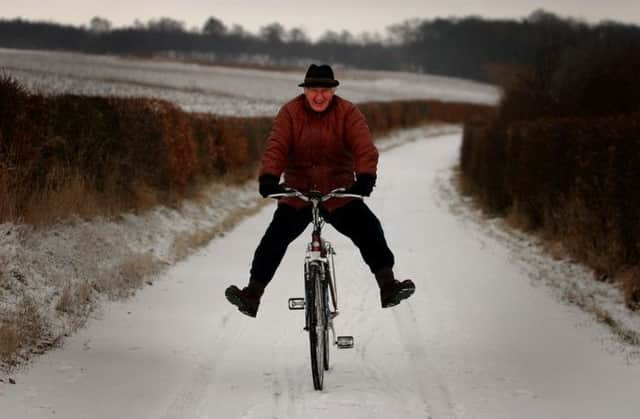Older cyclists are streets ahead in race for life


A study of fit amateur cyclists aged 55 to 79 found that many were physically and biologically much younger than most people of the same age.
The 81 male and 41 female participants underwent tests of their heart, lung, neuromuscular, metabolic and hormonal functions. Their reflexes, muscle and bone strength, and oxygen uptake were also measured, as well as mental ability and general health and well-being.
Advertisement
Hide AdAdvertisement
Hide AdThe results showed that among the cyclists the effects of ageing were far from obvious, with younger and older members of the group having similar levels of muscle strength, lung power and exercise capacity.
In one basic test of falling risk in older people, the time taken to stand from a chair, walk three metres, turn, walk back and sit down was recorded.
Taking more than 15 seconds to complete the task generally indicates a high risk of falling. But even the oldest cyclists –those in their seventies – had times that fell well within the norm for healthy young adults.
CONNECT WITH THE SCOTSMAN
• Subscribe to our daily newsletter (requires registration) and get the latest news, sport and business headlines delivered to your inbox every morning
Professor Norman Lazarus, one of the researchers from King’s College London and himself a cyclist, said: “Inevitably, our bodies will experience some decline with age, but staying physically active can buy you extra years of function compared to sedentary people.
“Cycling not only keeps you mentally alert, but requires the vigorous use of many of the body’s key systems, such as your muscles, heart and lungs which you need for maintaining health and for reducing the risks associated with numerous diseases.”
The cyclists were recruited deliberately to exclude effects from a sedentary lifestyle that may cause changes in the body capable of being confused with those due to ageing.
Men and women had, respectively, to be able to cycle 100 kilometres in under 6.5 hours, and 60 kilometres in 5.5 hours, to be part of the study. Smokers, heavy drinkers and people with high blood pressure or other health conditions were excluded.
Advertisement
Hide AdAdvertisement
Hide AdOxygen consumption rate showed the closest association with birth date, according to the results published in the Journal of Physiology.
Study leader Dr Ross Pollock, from King’s College London, said: “The main problem facing health research is that in modern societies the majority of the population is inactive. A sedentary lifestyle causes physiological problems at any age.
He added: “In many models of ageing, lifespan is the primary measure, but in human beings this is arguably less important than the consequences of deterioration in health. Healthy life expectancy – our healthspan – is not keeping pace with the average lifespan, and the years we spend with poor health and disabilities in old age are growing.”
Co-author Professor Stephen Harridge, of King’s College, said: “Because most of the population is largely sedentary, the tendency is to assume that inactivity is the inevitable condition for humans.”
SCOTSMAN TABLET AND IPHONE APPS